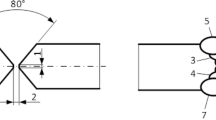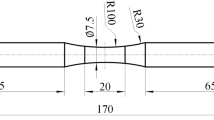Abstract
Modern electronics products relentlessly become more complex, higher in density and speed, and thinner and lighter for greater portability. The package of these products is therefore critical. The reliability of the interconnection of electronics packaging has become a critical issue. In this study, the novel testing methods for electronic packaging are introduced and failure mechanisms of electronic packaging are explained. Electronics packaging is subjected to mechanical vibration and thermal cyclic loads which lead to fatigue crack initiation, propagation and the ultimate fracture of the packaging. A small-sized electromagnetic-type bending cycling tester, a micro-mechanical testing machine, and thermal fatigue testing apparatus were specially developed for the reliability assessment of electronics packaging. The long-term reliability of an electronic component under cyclic bending induced high-cycle fatigue was assessed. The high-cycle bending-fatigue test was performed using an electromagnetic-type testing machine. The time to failure was determined by measuring the changes in resistance. Using the micro-mechanical tester, low cycle fatigues were performed and compared with the results of a finite element analysis to investigate the optimal shape of solder bumps in electronic packaging. Fatigue tests on various lead-free solder materials are discussed. To assess the resistance against thermal loads, pseudo-power cycling method is developed. Thermal fatigue tests of lead-containing and lead-free solder joints of electronic packaging were performed using the pseudo-power cycling tester. The results from the thermal fatigue tests are compared with the mechanical fatigue data in terms of the inelastic energy dissipation per cycle. It was found that the mechanical load has a longer fatigue life than the thermal load at the same inelastic energy dissipation per cycle.
Similar content being viewed by others
References
Ham S-J, Lee S-B (1996) Experimental study for reliability of electronic packaging under vibration. Exp Mech 36: 39–344
Kanchanomai C, Miyashita Y, Mutoh Y, Mannan SL (2002) Low cycle fatigue and fatigue crack growth behavior of Sn–Ag eutectic solder. Solder Surf Mount Technol 14(3): 30–36
Kim I, Lee S-B (2007) Fatigue life evaluation of lead-free solder under thermal and mechanical loads. In: 57th electronic components and technology conference, pp 95–104
Kim I, Lee S-B (2008) Reliability and failure analysis of lead-free solder joints for PBGA package under a cyclic bending load. IEEE Trans Compon Packag Technol 31(2): 478–484
Kim I, Park T-S, Yang S-Y, Lee S-B (2005) A comparative study of the fatigue behavior of SnAgCu and SnPb solder joints. Key Eng Mater 297–300: 831–836
Lee S-B, Park T-S, Ham S-J (2000) Experimental techniques for fatigue reliability of BGA solder bumps in electronic packaging. JSME Int J Ser A43: 400–407
Lee KO, Yu J, Park T-S, Lee S-B (2004) Low-cycle fatigue characteristics of Sn-based solder joints. J Electron Mater 33: 249–257
Palmer MA, Redmond PE, Messler RW Jr (2000) Thermomechanical fatigue testing and analysis of solder alloys. ASME Trans J Electron Packag 122: 48–54
Park T-S (1998) A study for reliability assurance of surface mount component through thermal fatigue testing. Master’s Thesis, MME98037, KAIST, Daejeon
Park T-S, Lee S-B (2005) Low cycle fatigue testing of ball grid array solder joints under mixed-mode loading conditions. ASME Trans J Electron Packag 127: 237–244
Rooney DT, Castello NT, Cibulsky M, Abbott D, Xie D (2004) Materials characterization of the effect of mechanical bending on area array package interconnects. Microelectron Reliab 44: 275–285
Shetty S, Reinikanine T (2003) Three- and four-point bend testing for electronic packages. ASME Trans J Electron Packag 125(4): 556–561
Shi XQ, Pang HLJ, Zhou W, Wang ZP (2001) Low cycle fatigue analysis of temperature and frequency effects in eutectic solder alloy. Int J Fatigue 22: 217–228
Solomon HD, Tolksdorf ED (1995) Energy approach to the fatigue of 60/40 solder: part I – influence of temperature and cycle frequency. ASME Trans J Electron Packag 118: 130–135
Towashiraporn P, Subbarayan G, Desai CS (2005) A hybrid model for computationally efficient fatigue fracture simulations at microelectronic assembly interfaces. Int J Solids Struct 42: 4468–4483
Wiese S, Schubert A, Walter H, Dukek R, Feustel F, Meusel E, Michel B (2001) Constitutive behavior of lead-free solders vs. lead-containing solders-experiments on bulk specimens and flip-chip joints. In: 51st electronic components and technology conference, pp 890–902
Wilde J, Becker K, Thoben M, Blum W, Jupitz T, Wang G, Cheng ZN (2000) Rate dependent constitutive relations based on Anand model for 92.5Pb5Sn2.5Ag solder. IEEE Trans Adv Packag 23(3): 408–414
Author information
Authors and Affiliations
Corresponding author
Rights and permissions
About this article
Cite this article
Lee, SB., Kim, I. & Park, TS. Fatigue and fracture assessment for reliability in electronics packaging. Int J Fract 150, 91–104 (2008). https://doi.org/10.1007/s10704-008-9224-4
Received:
Accepted:
Published:
Issue Date:
DOI: https://doi.org/10.1007/s10704-008-9224-4




